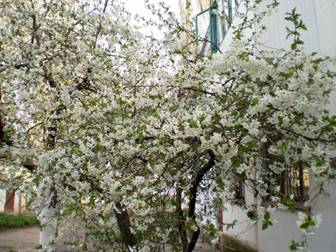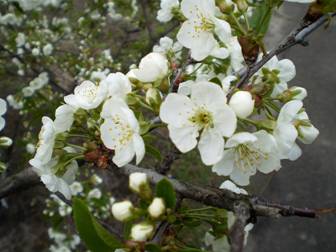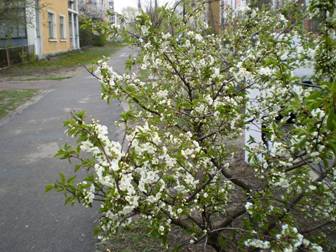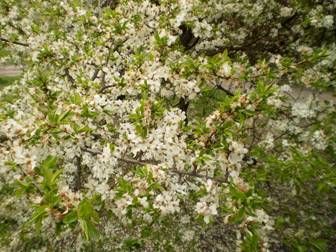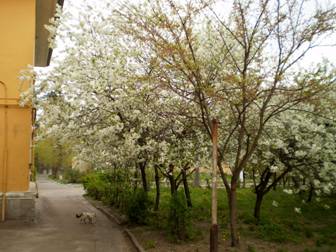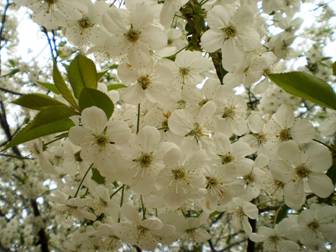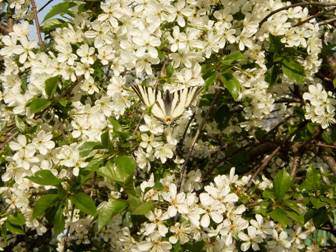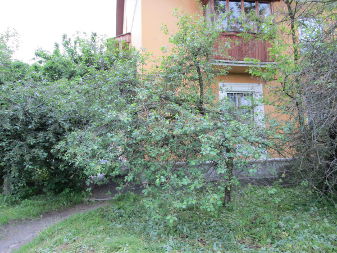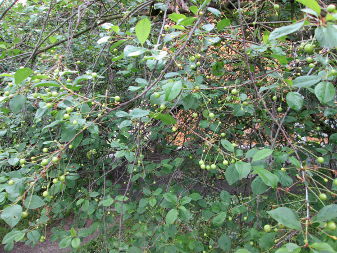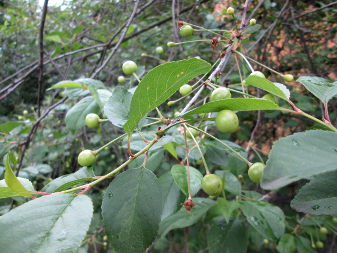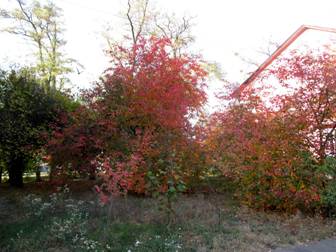Cherry (Cerasus), fam. Rosaceae.
Cultivated varieties (mostly small-fruit) massively occur in the city, and the wild ones – sometimes in the forest. Though all they almost every year please our eyes with plentiful blooming, the fruit crop is usually not too large. Wild forest plants can be even completely fruitless.
Various sources sometimes report about incredible benefits of cherry fruits. This cannot be accepted without discussion. To start with, many berries (raspberries, dewberries, strawberries, mulberries, currants) are far richer in vitamins and minerals. Moreover, due to sharply acid taste cherries are often eaten or processed with addition of large quantities of sugar, which nullifies their benefits. The acid act irritatively on teeth, tongue, and stomach, so even true lovers of cherries cannot eat a lot of them at one time. The stones also complicate their culinary use – they are too large to bear and too small to extract them one-by-one. As in most other fruits in Rosaceae family, the kernels of cherry fruits contain substances that easily convert into hydrocyanic acid. That is why you should not crack or grind them, or infuse in alcohol. Cooking lowers the danger of these substances several times, but not completely.
Despite all that, in moderation cherries can bring significant benefits to cardiovascular system, for atherosclerosis, and thrombophlebitis.
Interestingly, the autumn color of cherry leaves is prominent with its brightness and is analogous to the color of the fruits. It is especially notable in the vicinity of apricots, the leaves of which also acquire apricot-yellow color for several days in October…
